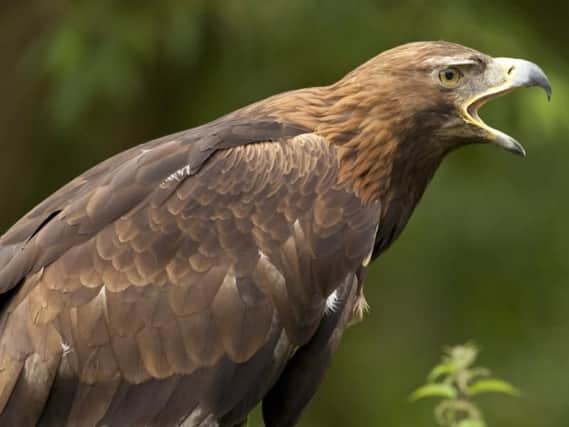Bird of prey official cases hit record low, but criminals could be avoiding detection


This is the lowest total in a single year since the Partnership for Action Against Wildlife Crime (PAW) Scotland began compiling data from 2004 onwards. However, despite the drop in recorded incidents, data from satellite tagged raptors continues to show birds disappearing in unexplained circumstances, with persecution strongly suspected in many cases.
There was a further 36 per cent fall in all recorded bird of prey crimes during 2017, according to the Scottish Government figures, with nine confirmed crimes compared to 14 the previous year.
Advertisement
Hide AdAdvertisement
Hide AdSpecies illegally killed in 2017 incidents included buzzards, owls, and a hen harrier, while the golden eagle, osprey and merlin were victims of disturbance cases. In addition to the poisoning incident, there were two shootings, two illegal trappings and three cases of disturbance.
The news comes days after campaigners complained that Police Scotland had not made public information about a poisoned peregrine falcon, which was found dead in the Pentland Hills in May.
Duncan Orr-Ewing, head of species and land management at RSPB Scotland, said: “We welcome the latest statistics produced by Scottish Government, whilst remaining vigilant about new techniques being employed by wildlife criminals to target birds of prey in known hotspots, as evidenced by the continuing suspicious disappearance of satellite tagged golden eagles and hen harriers.
“For these grouse moor areas, we believe that a licensing system is required, including firm sanctions to remove licences to operate, where wildlife protection laws are not being respected”.
Dr Ruth Tingay of Raptor Persecution UK said: "Superficially, these figures of reported raptor persecution incidents suggest a decrease in these crimes.
"However, when you add in the number of satellite-tagged golden eagles and hen harriers that have disappeared in suspicious circumstances as well as consider the continued absence of certain raptor species in areas managed for driven grouse shooting, the evidence suggests that raptor persecution crimes are not decreasing at all, but rather the criminals are getting better at hiding the evidence".
David Johnstone, chairman of Scottish Land & Estates, said: “Scottish Land & Estates is delighted to see the continued fall in raptor crime recorded by the police in 2017, now down to single figures and its lowest point since 2004.
“Land and sporting managers have played their part in achieving this result and we will continue to work with our PAWS partners and to focus on prevention of any further incidents."
Advertisement
Hide AdAdvertisement
Hide AdEnvironment secretary Roseanna Cunningham said that a grouse moor licensing system was among a range of methods being considered.
She said: “While I welcome this further reduction in recorded bird of prey crimes, including our lowest ever total for poisoning incidents, reports from early 2018 indicate that this remains a problem in some parts of Scotland."
Scottish Gamekeepers Association Chairman Alex Hogg said: “In 2010, in Scotland, there were 22 cases of raptor poisoning which was unacceptable. Seven years on, we are looking at one case, with shooting and trapping reduced substantially as well. Few, if any, types of crime in this country have declined at such a rate. This is welcomed by the SGA.
“The SGA has expelled six members in six years for wildlife crime convictions. Going forward, we believe satellite tagged birds should be monitored independently, in the same way SASA currently handles poisoning cases for Government, so that everyone involved in tackling this issue can understand more about any loss of transmission from tags and can develop future strategy, from a position of trust.”